Are you an Italian foodie? The healthiest food there is comes from Italy. Eating clean is easy here. Highest quality seasonal food that is taken care of with respect and knowledge brings about the most delicious and nutritious dishes. The pride and traditions that shines through every meal has a mesmerizing effect on travellers to this land. You have not tasted real food until you travel to Italy. The versions of ‘Italian’ that exist abroad are adapted to other pallets, and often not true to the original recipes. No doubt — they are tasty, but no way do they measure up to what you get in Italy’s many regions. This Italian foodie guide will help you plan for your Italy vacation. Get an insight Italy’s food traditions, the do’s and don’ts for eating out, and a flavour of what you can expect. Are you on your way yet?
Italian Foodie: Food Is a Serious Matter
This is Part 1 in a mini-series about Italy and its relationship with food. What to eat (or not) is a serious matter here. You cannot ignore it if you are planning to holiday in this magnificent country. Italians come across as easy-going and flexible, except when it comes to eating food. Knowing a bit about Italy’s food traditions, and the Italian foodie do’s and don’ts will be essential if you want your Italian vacation to match your expectations.
In Part 2, we visit an inspirational Chef, and take part of his inventive yet traditional take on the food of Southern Italy. In Part 3 you get recipes that are as easy as they are truly delicious. If you have fresh ingredients you cannot go wrong. Follow the GOODista and bring an Italian foodie feast into your home.
Italian Foodie: Tradition with Quality Ingredients
Italian cuisine is characterised by its simplicity, with many dishes having only four to eight ingredients. Italian cooks rely mainly on the quality of the ingredients rather than on elaborate preparation. Season and locality play a huge role. You can’t often buy food if it is not in season. 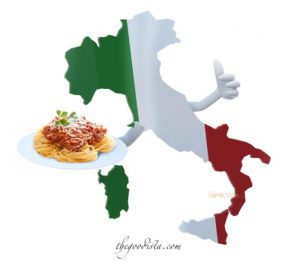 Eating clean is easy. When you live here you look forward to the autumn pumpkin season and the lemons from Amalfi, and cannot wait for the first sign of spring when new asparagus beckon.
Eating clean is easy. When you live here you look forward to the autumn pumpkin season and the lemons from Amalfi, and cannot wait for the first sign of spring when new asparagus beckon.
Imported products are viewed suspiciously. Processed or frozen foods have not taken a hold. These days a few shops will have a shelf for ‘foreign foods’ which remains fully stocked until the products go out of date, and often commented upon as ‘not food’ by head-shaking local heroes.
 Fresh produce, legumes, local meats, and fish remains king here. Pasta you buy in dry form, or make your own. A true Italian will always have connections to get the best olive oil and wine, and a relative who cures hams and salamis, and of course any liquor you make yourself.
Fresh produce, legumes, local meats, and fish remains king here. Pasta you buy in dry form, or make your own. A true Italian will always have connections to get the best olive oil and wine, and a relative who cures hams and salamis, and of course any liquor you make yourself.
Food is a topic for serious discussion. Every dish is savoured carefully and commented upon. At dinner you eat together, and enjoy every bite. You eat slow, you talk and appreciate the ‘sapori’ (the taste of the food). Italy has a direct connection with its collective stomach. Every Italian seems to know which food works for the digestion, and will not hesitate to tell you what to eat and not. Do not try to eat pork or chocolate in summer, nor ice-cream in winter – it isn’t good for you!
A draw back is the lack of variety of other cuisines. How many times have we not wished to go for ‘an Indian’ or a ‘a Korean’ dinner in our small village. We have learnt how to adapt, and sometimes cook dishes that has a different flair and taste. In the end we always come back to the simplicity and ease of our adopted lands foods. 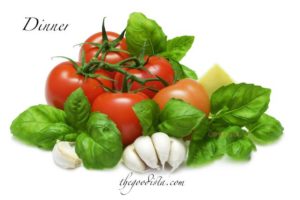
Italian food traditions go back centuries and the relationship with food in one where every child knows what real food is and how it should taste. The overall result is a foodie feast that comes with health, and seeped in a wealth of heritage and respect for the land.
Italian Foodie: Regional Diversity with Historic Roots
Italian food culture is regional diversity. Every dish, even the most simple, has roots in the past and traditions of that particular region. This excellent book about its diversity: La Cucina: The Regional Cooking of Italy gives you the inside story, and the recipes you need.
The North has a stronger Germanic traditions with more dairy, whilst the South in influenced by the Arabic invasions and mediterranean influences. The roman empire brought influences from many cultures, and many wars have impacted the food as well. This article from Wikipedia gives you a good round-up of the variations of Italian Regional Foods.
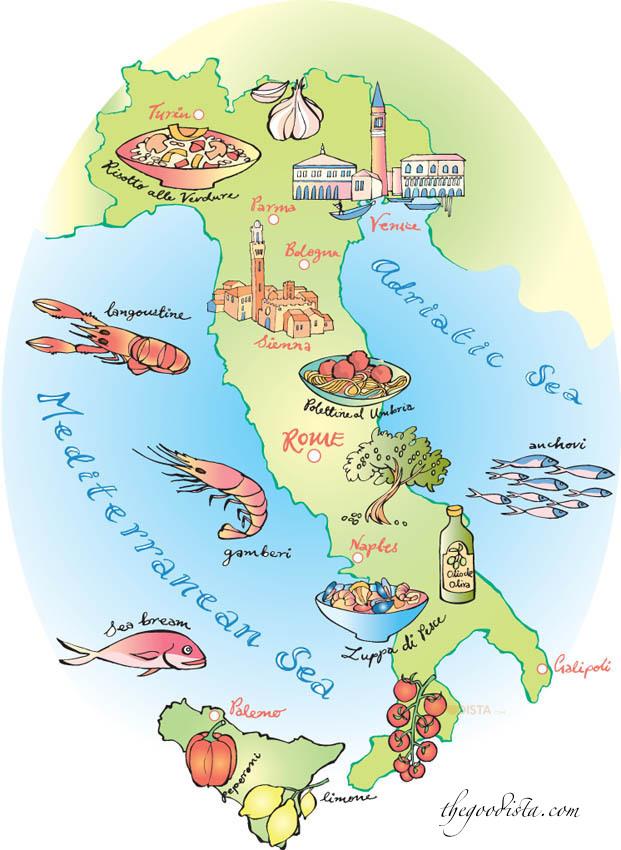 A traveller to Italy will be aware of the most common dishes such as pasta and pizza. The rich variety of foods doesn’t become apparent until you start travelling. Italy has a rich agriculture with wheat, rice and a huge variety of fruit and vegetables. Surrounded by the sea, fish is a staple around the coast, and the mountainous centre has sheep, cattle, buffalo and pigs – as well as game birds, rabbits and poultry.
A traveller to Italy will be aware of the most common dishes such as pasta and pizza. The rich variety of foods doesn’t become apparent until you start travelling. Italy has a rich agriculture with wheat, rice and a huge variety of fruit and vegetables. Surrounded by the sea, fish is a staple around the coast, and the mountainous centre has sheep, cattle, buffalo and pigs – as well as game birds, rabbits and poultry.
You realise how regional foods
Italy is a rich land that has so much to offer. The idea that it is only pizza and pasta is one that you can put out of your head quickly. Eating clean, simple, healthy food with lots of variety and elegance is what distinguishes Italy.
Italian Foodie: Travellers Need To Know Tips
Italy has strong food traditions. Food is a very serious and passionate matter. When you travel to Italy you realise soon that a menu is more a guideline, than a description of what is available.
Ordering Food and The Order of Food
The ordering of food is a discussion, should take time, and careful thought. It is a supreme communication exercise and an exchange of minds that takes place to figure out what is seasonally available versus the eaters preferred tastes.
Knowing Italian certainly helps, as it can be difficult to just point and hope for the best. Having said this, showing some indication that you at least understand that food is to be respected is a very good start. A basic food glossary and good phrases are good to know 🙂
Slow food has its home in Italy. A dinner should be appreciated and follows a set order – and pace:
- You start with the ‘antipasto’ – which are small dishes with hot and cold appetizers.
- The main meal is divided in two parts: The ‘primo’ which is a pasta, gnocchi, risotto or soup dish; and the ‘secondo’ which is your fish or meat. It is good to know that the secondo will not come with loads of potatoes, gravy or other garnish. You get the fish or meat – that’s it! You will need to order separate plates of vegetables. Ask / look for the so-called ‘contorni’: your choices of seasonal (available) vegetables.
- The end of the meal can also be in two parts, but you are forgiven if you don’t give in to both. The first part is the ‘formaggio e frutta’ (cheese and fruit) and the second ‘dolce’ (desserts like tiramisu, homemade cakes, ice creams etc).
It is well worth knowing that you need not order the full series – and if a couple will want only a pasta or the other only a meat/fish dish be careful to express that these should be brought in together as the risk is that the pasta eater will get that first while the other person has to wait. The order of dishes is a serious matter, too…
Eating Lean and Clean
You would think that you cannot stay lean in this wonderful country but, I know from experience, that it is far easier than in many other countries.
The first thing to consider is that it is very easy to eat clean here as processed food is shunned. The recipes are simple and only contains ingredients that the body can deal with. The fact that all foods are made in-house, and never (ever!) processed makes them healthy. Of course, the produce is of highest quality, and the proud chef would never cook with ingredients that s/he hasn’t approved. You will get your full health-load of vitamins and mineral here without even trying. If you are more inclined to stay on the leaner side – you can refer to the Italian ladies favourite phrase ‘la ligna’ (the figure). You then simply order a small vegetable or fish based anti-pasto, followed by either a primo or a secondo – and finish with a fruit.
Italian Foodie: 10 Do’s and Don’ts for Eating Out
Tourists can feel very alone when eating out in small Italian trattorias, as every person is supposed to know how to order, follow a code of conduct, and not ask for things that one simply cannot digest 🙂 Here are some tips:
- Lunch is served from 13:00 and dinner time is from 8 pm and onwards – before this is way too early.
- Don’t ask for ketchup, mayonnaise, salad or BBQ sauce. You can however ask for ‘pepperonicini’ (chilli), vinegar and olive oil.
- Cappuccino or Caffe Latte is not to be drank after the morning hours (until 10 am), and certainly not after a lunch or dinner. Order a ‘caffe’ (small espresso coffee) and all will be well.
- When looking at a menu remember to ask which ‘contorni’ are available – as your steak or fish won’t come with any additions (vegetables etc.).
- When you enjoy a fish and seafood pasta do not put parmesan on top. You might get thrown out if you do 🙂
- Do enjoy the bread basket, but don’t eat it with your pasta. Mop up the sauce afterwards. Butter will never come with bread, and asking for it would be seen as strange, as well as dipping it in olive oil to eat. Bread is bread – by itself.
- Never cut your pasta. Use your fork and catch a strand. Learn to twirl unless you want to be told off by other guests/chef/waiter.
- It is advisable to order wine by 1/2 carafe at a time, and drink moderately. Wine accompanies food, but being drunk is seen as ‘brutta figura’ (bad behaviour). At the end of a meal, the restaurant will often come with limoncello or grappa (homemade of course) and place the whole bottle on your table. Drink a small glass by all means, but don’t attack the bottle!
- While tipping is nice (approx. 10 %), it is not a must – do however expect to pay a ‘coperto’ which is a cover charge and includes the bread. Always take the receipt with you as this is law.
- Do respect, appreciate and enjoy the food. Celebrate the quality and savour the taste of real food. Remember that this is the home of slow food, so take your time and don’t feel rushed. Enjoy!
Food, traditions and the culture of eating and drinking is serious business in Italy so knowing a little goes a long way in terms of how you get treated, and the overall experience. As with any travel you should try to respect the country and people who live in it. Admittedly the unwritten rules about Italian food are many, but look around and read up. Go to Italy to discover this rich and wonderful land that has so much to offer.
Don’t miss out on Part 2, when we review the Litirico’s Restaurant and Pizzeria – a recent discovery in Basilicata, Southern Italy. And in Part 3 – we give you recipes and tips for our own Italian foodie feast experience and recipes. You will love the ease of the seafood pasta and focaccia recipes – with plenty of tips how to take your Italian dinner to a new level. Follow The GOODista and get the updates, newsletter and more.
Recommended and Related:
- Italian Cuisine Facts – Wikipedia
- History of Italian Food – guidetointaly.com
- Italian Food Glossary and Phrases – reidsitaly.com
- Italian Food Customs (the unwritten rules) – Discover Italian Food
- Travel Inspiration from Amazon:
What’s Your Best Food Tips From Italy? Comment:




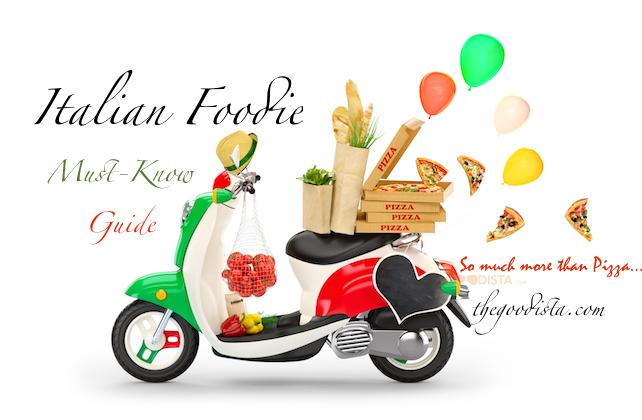

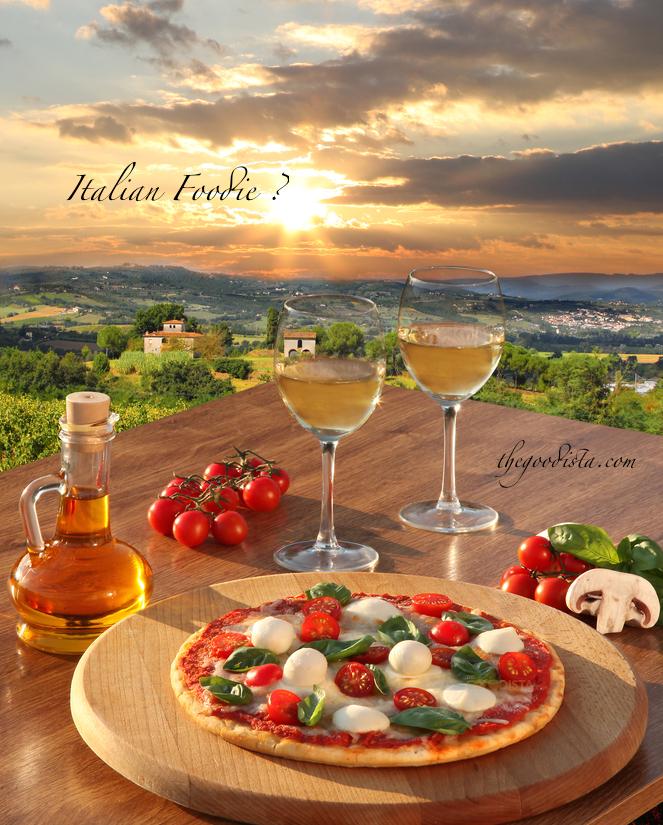

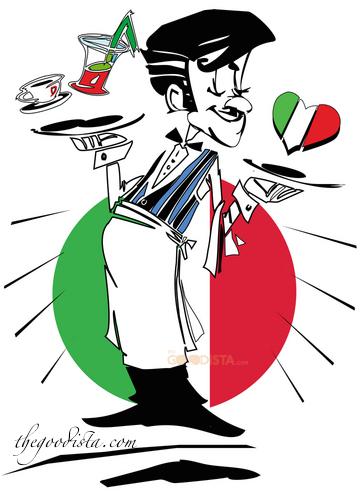

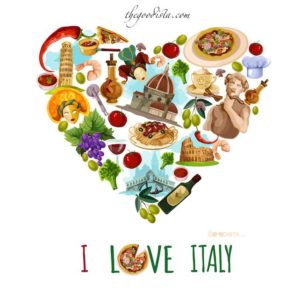







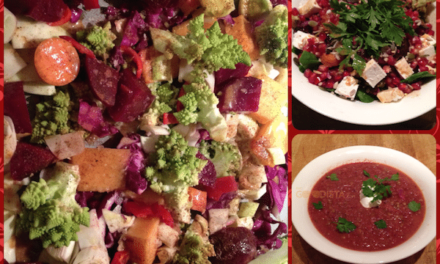
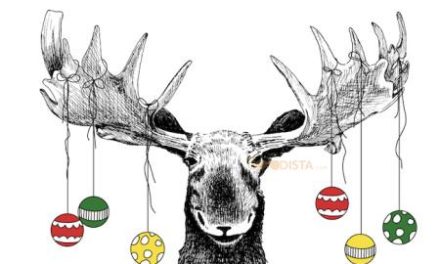




In Italy you do eat food in season, for the best flavour, and you eat slowly and carefully to enjoy the well prepared dishes, such a pleasure! I much enjoyed your post on The Goodista! Excellent guide, dictionaries and advice with elegant and fun comments. So useful and wonderful, thank you!
Thanks for your comment and glad you found our must-know guide for Italian Foodies useful. We get inspired by your comments too – so keep reading and writing to us! Thanks!